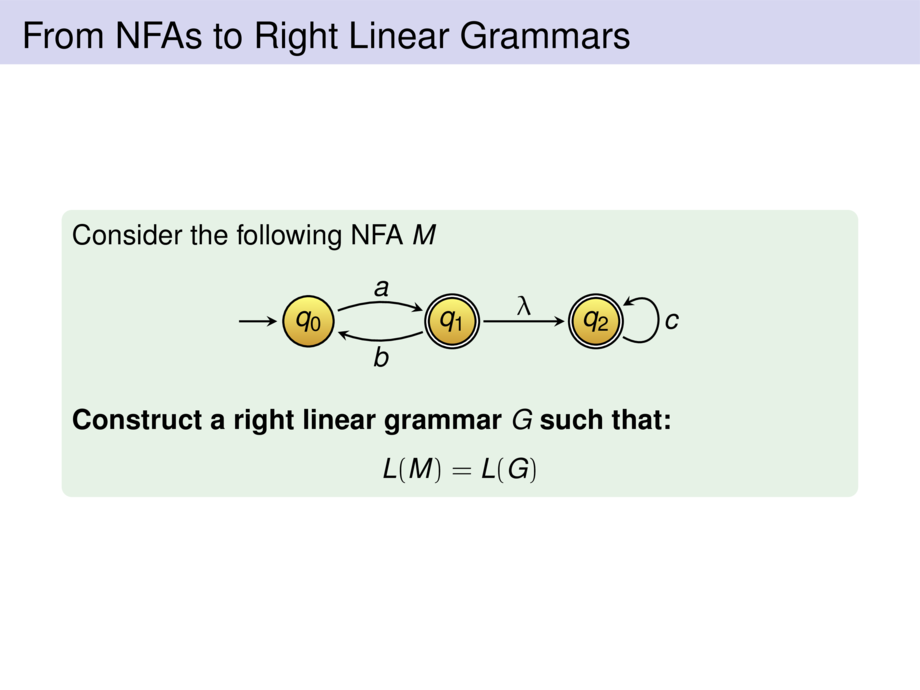



































































































59/80
\begin{frame}{From NFAs to Right Linear Grammars}
\begin{exampleblock}{}
Consider the following NFA $M$
\begin{center}
\begin{tikzpicture}[default,node distance=20mm,->]
\node (q0) [state] {$q_0$}; \draw ($(q0) + (-10mm,0mm)$) -- (q0);
\node (q1) [fstate,right of=q0] {$q_1$};
\node (q2) [fstate,right of=q1] {$q_2$};
\draw (q0) to[bend left=20] node [label,above] {$a$} (q1);
\draw (q1) to[bend left=20] node [label,below] {$b$} (q0);
\draw (q1) to node [label,above] {$\lambda$} (q2);
\draw (q2) to[rloop] node [label,right] {$c$} (q2);
\end{tikzpicture}
\end{center}
\emph{Construct a right linear grammar $G$ such that:}
\begin{talign}
L(M) = L(G)
\end{talign}
\end{exampleblock}
\end{frame}

